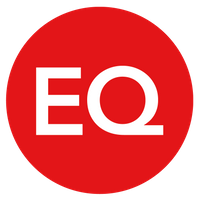Steps employers should take to connect with the workforce through reward and benefits strategy

Why is inclusivity and rational understanding of benefits’ relevance important? Because it’s that that will support wider workforce engagement strategy. And with that comes motivation and collaboration.
Collaborative challenges and COVID-19
With remote working at an all-time high, and Zoom fatigue setting in as COVID-19 restrictions tighten once more, creating connections between the different parts of your workforce is more important – and more complicated – than ever.
There’s little doubt that higher levels of cooperation equal better performance. According to Stanford University's Cues of working together fuel intrinsic motivation study (2014), people who feel they are working together will stick to a challenging task up to 64% longer than those going it alone, while also reporting higher engagement levels, less fatigue and better success rates.
But how can you achieve inter-departmental collaboration when your people haven’t even seen the colleagues they work with - in the flesh at least - for months?
Effective benefits programmes and communications are two of the most powerful devices at your disposal, especially now.
PwC's CEO Panel Survey (2020) shows that 90% of UK CEOs are undertaking employee wellbeing initiatives in response to COVID-19, with 23% expecting that doing so will have “the biggest positive impact on their organisation’s long-term reputation".
Yet just 43% of employers have a benefits strategy in place – even though the majority (99%) want to engage employees with their benefits schemes, according to Aon’s UK Benefits & Trends Survey (2020).
And fewer still make the effort to understand what makes their employees tick on a personal level.
Engagement: the key to company-wide cohesion
To create a truly inclusive and cohesive reward and benefits programme, you need to both understand your employees and align their personal values with the organisation’s culture.
The good news is that, as with so many aspects of benefits provision, engagement is the key to achieving both objectives; if you can offer advantages that resonate with people on an individual level, they will come together naturally.
However, simply breaking your workforce down by age group or level of seniority is not enough to achieve this. Take financial wellbeing. With 71% of Britons worried about being able to pay their rent, mortgage, or utility bills due to the COVID-19 pandemic, according to a survey by My Online Therapy, its relevance is undeniable.
But you can’t just assume an older worker wants retirement planning advice, or a younger employee doesn’t.
Whether you’re trying to engage with a 23-year-old trainee accountant or a 55-year-old project leader, there’s little point inviting them to an investment webinar if mounting unsecured debt is their most pressing concern.
Communications about such events could even increase their anxiety levels when what they really need is access to debt management advice, or discounts that can help to ease the strain.
Attaining the level of understanding required to avoid such mistakes is hard – especially as many employees feel uncomfortable admitting personal problems such as debt in the workplace.
Fortunately, there are tools to help: tools which combine benefits data with third party intelligence to provide a three-dimensional view of your employees. All the data used to complete the picture of what your employees need is anonymised to postcode. So, you can access the information you need to unite your workforce via your reward and benefits programme, without compromising their privacy or breaching GDPR rules.
By ensuring bespoke benefit communication in this way – the right messages to the right people at the right time and place – will set you on the road to better engagement and all the good things that come with that: not only in terms of delivering a valued reward programme, but also with regard to teamwork and motivation.
The author is Andrew Woolnough, Director, Equiniti HR Solutions.
This article is provided by Equiniti.
Supplied by REBA Associate Member, Equiniti
Hi we are EQ; some may know us as Equiniti! We provide specialist reward, benefits and payroll solutions.







